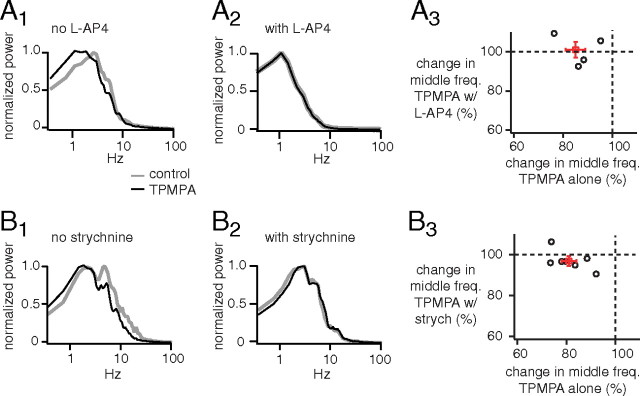Figure 10.
Blocking ON bipolar cells or glycine receptors suppresses the effect of TPMPA on the frequency response of OFF ganglion cells. A1, Power spectra of excitatory currents from an OFF ganglion cell (G5) normalized by the peak power. TPMPA shifted power to low frequencies. A2, Adding l-AP4 beforehand to block the ON bipolar cell reduced the effect of TPMPA on frequency response. A3, A plot of change in middle frequency attributable to TPMPA with l-AP4 added beforehand against the change attributable to TPMPA alone (4 G5 cells). Cells lie near 100% when l-AP4 is added beforehand, but between 70 and 90% without l-AP4, indicating that l-AP4 prevents TPMPA from reducing middle frequency. B1, Power spectra of excitatory currents from another OFF ganglion cell (G5) show that TPMPA shifted power to low frequencies. B2, Adding strychnine beforehand to block glycine receptors reduced the effect of TPMPA on frequency response. B3, A plot of change in middle frequency attributable to TPMPA with strychnine added beforehand against the change attributable to TPMPA alone (6 G5 cells, 1 unclassified). Cells lie near 100% when strychnine is added beforehand, but between 70 and 90% without strychnine, indicating that strychnine prevents TPMPA from reducing middle frequency.

